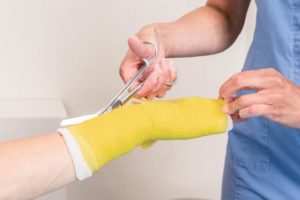Health A-Z
10 Items Every on-the-Go Nurse Should Have on Hand

For healthcare professionals, having the right tools at hand is crucial to providing quality patient care. From a stethoscope to check patients’ vitals to pens for annotating charts, there are several essentials every nurse should have to make their job easier, allowing them to spend more time on patient care. Whether you’re a new nursing graduate or an experienced nurse professional, these nursing items are vital to your success on the job.
1. An Extra Pair of Scrubs
If your scrubs become soiled during your shift, you need to have an extra set of nursing scrubs readily available. Wearing clean scrubs for the duration of your shift is essential to avoid cross-contamination between patients and to protect your own health. Choosing suitable scrub tops helps ensure you stay comfortable during your shift.
Look for elements that help you stay cool, such as moisture-wicking material or mesh ventilation. Also, make sure you have several pockets in your scrub top and scrub pants. Ample storage options ensure you don’t need to constantly travel between your workstation and the break room to retrieve items from your nursing bag.
2. Comfortable Nursing Shoes
A supportive and comfortable pair of nursing shoes is vital for nurses who spend long hours on their feet. The best footwear for nurses eases tension and provides adequate foot support. Ill-fitting shoes can have a negative impact on your quality of life, especially for women who can experience disabling foot pain as a result of wearing uncomfortable shoe long-term.
Nurses can choose from a wide variety of colors, styles, and materials for their nursing shoes, including fabric, leather and vinyl. You can choose athletic sneakers with options for laces or hook and loop straps. In some sneakers, there is extra cushioning and support for the arches and balls of your feet to make standing on your feet during a shift more comfortable.
Clogs are easy to slip on and stay comfortable throughout your shift. Due to their open backs, clogs provide breathability for your feet. A wet cloth is all you need to clean your clogs if water or medical liquids spill on them.
3. Compression Socks
Using compression socks promotes healthy blood flow and prevents blood from accumulating in the feet. You also experience less discomfort and fatigue from standing and walking all day, which lowers your risk of blood clots. If you would rather wear conventional socks, lower body compression sleeves are an option.
Compression sleeves cover your calves, providing the benefits of a compression sock while leaving your foot free so you can wear regular socks to work.
4. Pens and Markers
Pens and markers are necessary for nurses to update their patients’ charts and note important health-related information for doctors and nurse practitioners. Most nurses use a color-coding system, so all nurse pens should come in at least two colors. Changing colors is easy with multi-color pens, and some even include a mechanical pencil.
Nurses refer to nursing labels to ensure patients receive the correct medication. These labels feature coatings that prevent ink from drying quickly when written on. Look for alcohol- or oil-based markers that dry rapidly on shiny surfaces to reduce the risk of smearing.
5. Lab Coats

Wearing a lab coat can protect you from germs and other hazardous spills during your shift.
This extra layer keeps you warm on top of your scrub tops while still providing large pockets for pens and other small essentials.
6. A Personal Stethoscope
Nurses use their stethoscopes so frequently that it’s a good idea to always have your personal stethoscope on you. The stethoscope you choose should be appropriate for your nursing specialty. Nurses working in the NICU must use a small stethoscope to detect heart abnormalities in newborns.
Intensive or emergency care nurses need to use stethoscopes suitable for adult patients. It is important to consider several factors when selecting the right stethoscope for you.
A high-density material, such as stainless steel or titanium, transmits sound better. Also, the length of the tubing is important; the longer the tubing, the worse the sound quality. A stethoscope with thick, robust tubes and snug ear tips can help you focus on hearing your patient’s heartbeat.
7. A Reliable Watch with a Second Hand
Many healthcare facilities prohibit smartphone use when dealing with patients and the public for safety and privacy concerns. Aside from telling time, a watch with a second hand makes it easier to quickly check a patient’s pulse or blood pressure. The watch should also have large numbers, so you can get the information you need right away.
A second hand on your watch is essential when you’re taking someone’s pulse or giving them medication. Find a watch with a wide face, a visible second hand, and a waterproof silicone band to prevent the watch from getting soiled.
8. Small Tube of Hand Cream
Almost all exam rooms contain hand sanitizer, and a number of hospitals put them in the hallway to encourage healthcare staff, patients, and visitors to keep their hands clean. You may experience dry hands since nurses must frequently wash and sanitize their hands while assisting patients.
During your shift, keep a tube of moisturizing hand lotion at hand. You should find a rich, fragrance-free hand cream that can soften and repair any flaky or broken skin. To avoid dry skin, apply lotion every time you wash your hands and let them dry completely before working with medications or patients.
9. Nursing Scissors

In an emergency, they can also handle cutting difficult-to-open medical packages, dressing wounds, and even clothing.
Make sure your scrub pants have deep, reinforced pockets so you can carry these nursing scissors safely without poking yourself or damaging your scrubs.
10. Nursing Bag
Nursing bags make it easy to carry all the items you need for work, such as your stethoscope, scissors, medical tape, and other items. Extra scrubs can also be stored in your bag. Invest in a hard-surface water-resistant bag you can wipe down and clean easily. Your bag should have numerous compartments and pockets, so you can stay organized and find your supplies quickly.
Nurses Need to Be Prepared for Anything
Nursing shifts are long and strenuous, but you can get through them more comfortably with the right materials on hand. Wearing the appropriate scrubs for women throughout your shift allows you to remain comfortable and prepared for any medical situation. By having these supplies readily available, you not only feel prepared but also help to make your community healthier and safer, ensuring the well-being of your patients.
- Img1 Source: Dragana Gordic/Shutterstock.com
- Img2 Source: Monkey Business Images/Shutterstock.com
- Img3 Source: Ondrej_Novotny_92/Shutterstock.com








